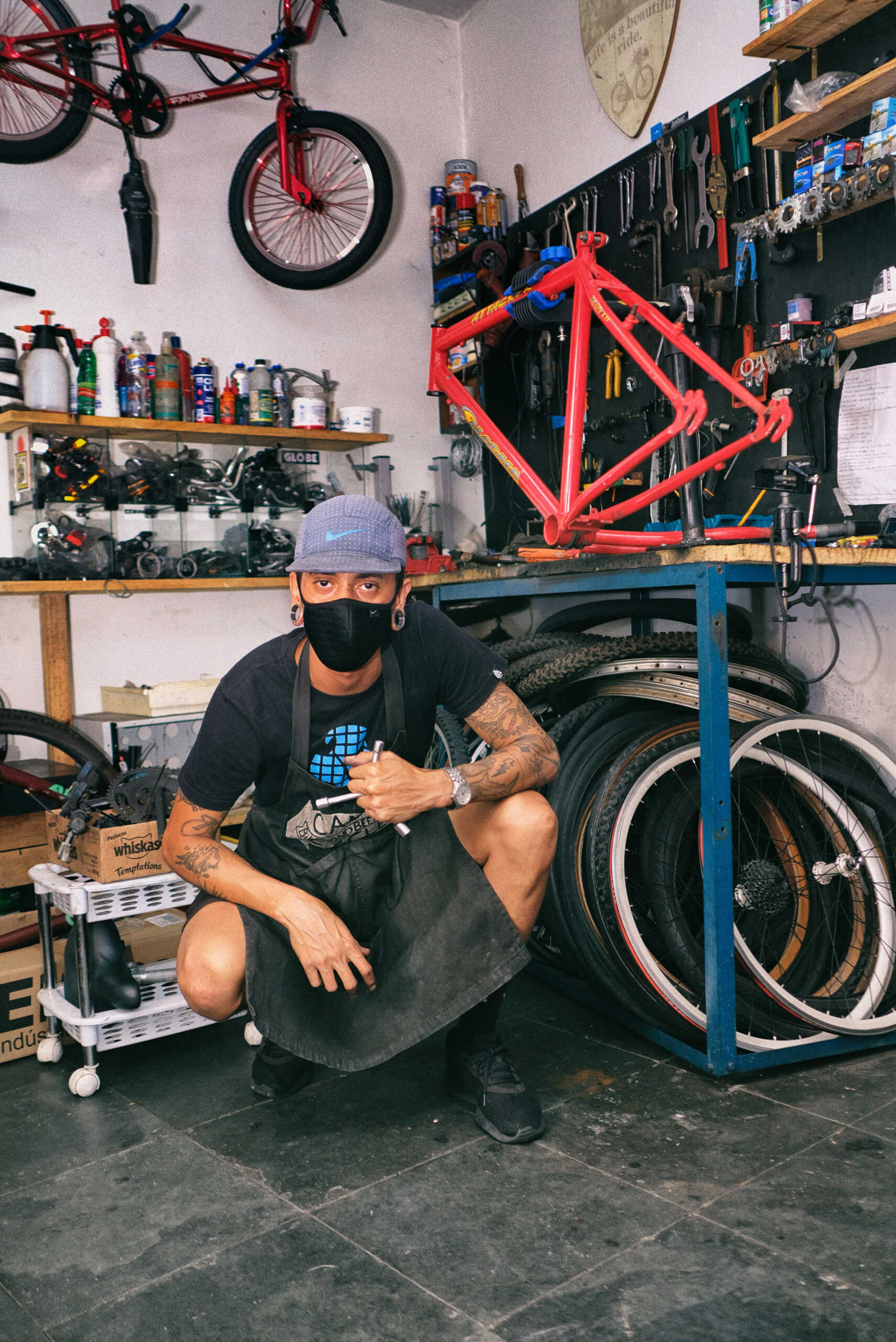
How do you introduce yourself?
I introduce myself as a person who tries to solve problems. A mechanic cyclist.
What is the role that repairing bikes play in your life?
It’s the main part of my life. Moreover because of the obsolescence of things…I think that providing longer resistance to any piece or object, like a bike, it’s something good.
For how long have you been fixing bikes?
I’m 29 years old, it must have been about 21 years since I’ve been fixing bikes. When I owned my first bicycle, it was damaged. Back in the 2000’s earning a bike was only possible if it was damaged (lol). So, since my first bike I had to fix it… my father used to say that he would help me out, that he would fix it, but he never did. Besides he said he would teach me how to ride it too and again he never did, so I had to learn, and I started fixing my bikes until I began to work in a specialized shop.
Why do you think that repairing, taking care of things and the maintenance of objects is important?
Nowadays, as everything is easier to get something at an accessible price, and as for lots of innovations, things started to become brief, they have a lower lifetime. But if we start to take a closer look we don’t need to follow this idea and we can begin to use things with more wisdom, knowing that changing everything constantly… leads us to higher cost in materials and energy… so I think fixing things is a positive path, so that you don’t need new things.
Can you describe your process of repairing?
Normally when I take a bike, the first thing is to identify what the problem is. In the majority of cases the pieces, the bikes, the objects, they are discarded for very few motives that don’t justify leaving them aside and not being used. Fixing an used bike is an organic process… it demands study… it isn’t always that the best solution is to use a new piece. Most of the time, the best way is to take an used piece that is in good condition and that matches the bicycle, or to make the damaged one to come back to work.
Is it common for a damaged piece to start working again?
Normally, yes. Mainly, when it damages it is because the object was made with poor material, it already comes if a blind spot, pre-determined to be wasted by use, by any mistake a piece can be damaged, it is almost always possible to give it a extended life or to make a quick fix, trying to avoid the problem in an alternative way. But even if the piece is damaged it can be used. If it is not being used in its original function, it can be useful in another place in the bike.
Can you tell a story that is significant about an object, or a bike that you have fixed and had an important meaning to you? A challenge, something that has motivated you.
It is a daily challenge. I’m a self-taught person, I learned by observing, repeating, so challenging is common, there’s always a new thing going on. It’s a constant state of acquiring knowledge, it’s no good to be frightened, it is necessary to observe carefully and try to solve the problem.
If you could summarize your fixing philosophy in a few words, what would it be?
Trying to fix in the most simple way, that works for the longest time possible. And try to renew the piece that maybe would overcome the original lifetime of it. I think my philosophy is this, use it until there’s no more to be done, until it is totally wasted (lol).
Do you think that the fact that you fix bikes has changed the way you cycle? Or as being a cyclist interfered in the way you work?
I think so… by the time that you have an extensive contact with a bike, without noticing you begin to understand its physiognomy and functioning, and start to treat it better, to value your bike. I think people that act as immediatist end up ruining it by misuse. By the time you have the knowledge about what a bike is, how it can aid you… the least you can do is to not break it (lol). After you get this, bikes only are damaged by negligence.